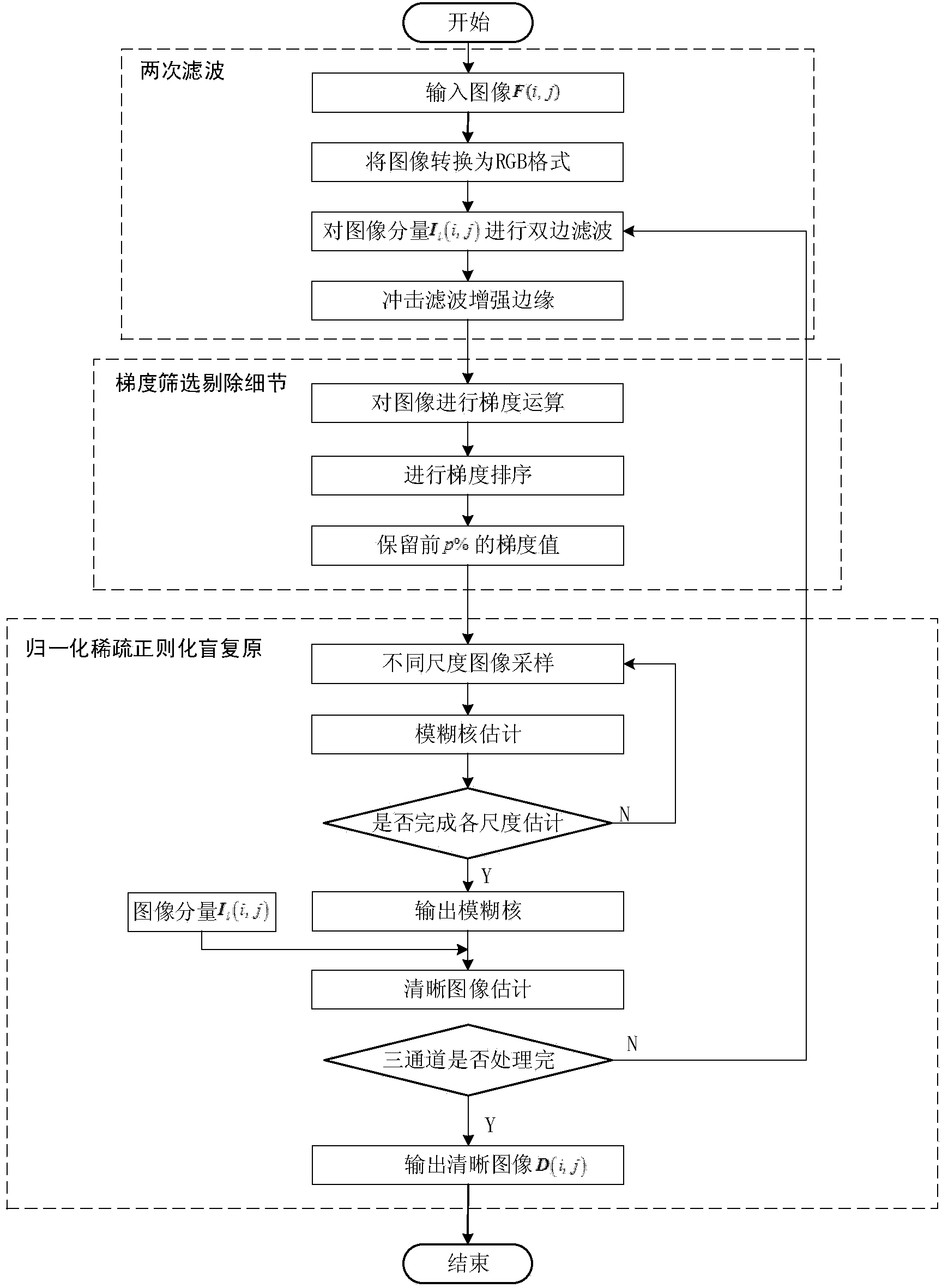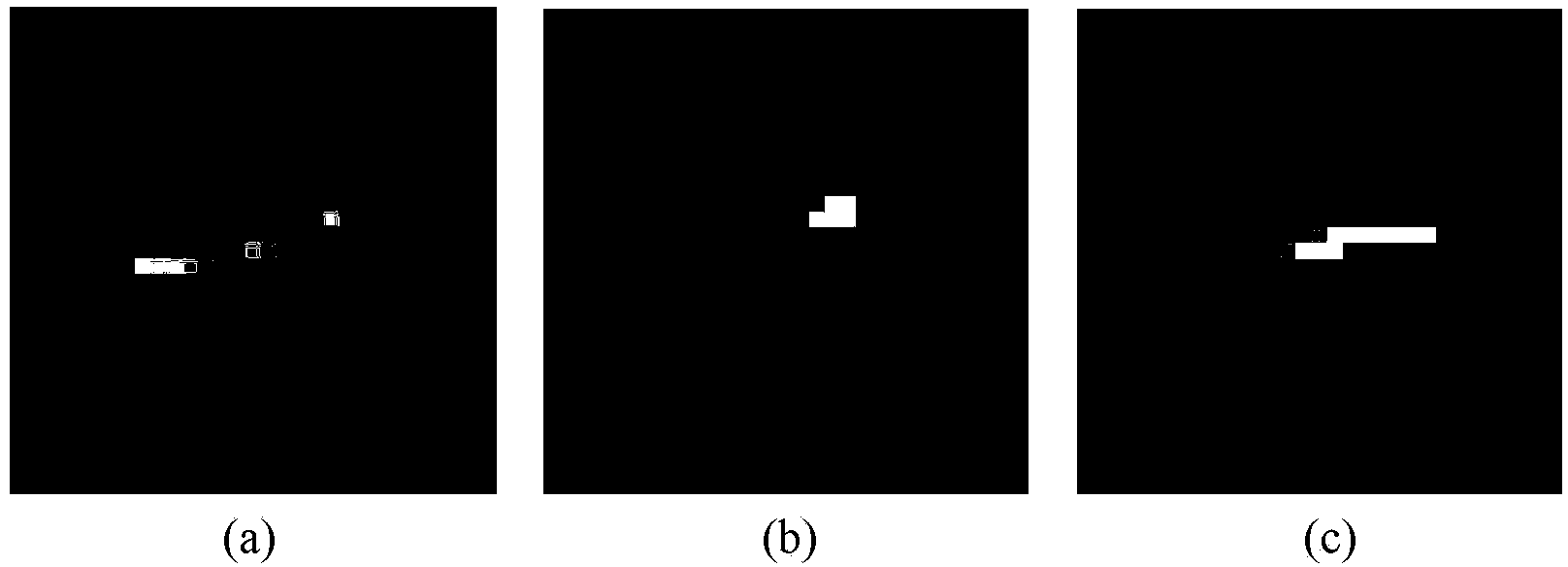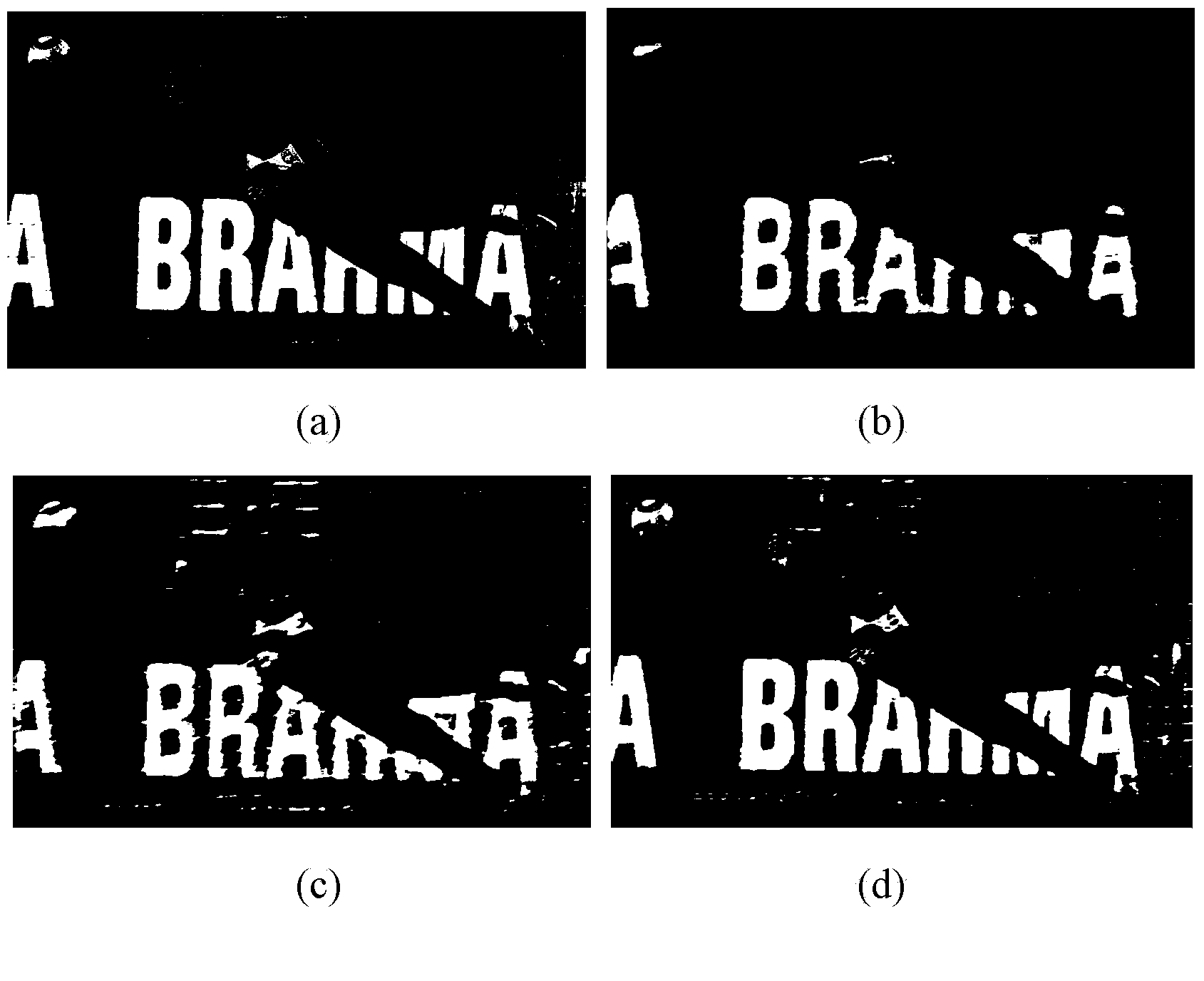Digital blurred image blind restoration method based on gradient screening
A technology of blurred image and blind restoration, applied in image enhancement, image data processing, instruments, etc., can solve problems such as poor image restoration effect and inaccurate blur kernel estimation.
- Summary
- Abstract
- Description
- Claims
- Application Information
AI Technical Summary
Problems solved by technology
Method used
Image
Examples
specific Embodiment approach 1
[0043] Specific embodiment one: a kind of method for blind restoration of digital fuzzy image based on gradient screening described in this embodiment includes the following steps:
[0044] Step 1: Input image F(i,j), if the image is a color image, convert it to RGB space, and extract its three image components I l (i, j), where l=R, G, B, the subsequent steps are to perform blur restoration processing on the three image components respectively, and after the individual image components are processed, the three image components are synthesized into the final restored image, gray The high-degree image processing is the same as the single image component processing method;
[0045] Step 2: For the image component I l (i, j), l=R, G, B perform bilateral filtering to suppress image noise while retaining the edge information of the image. The specific form of the bilateral filter is as follows:
[0046] W ij = exp ...
specific Embodiment approach 2
[0067] Specific implementation mode two: the difference between this implementation mode and specific implementation mode one is: the steps described in step two The value is 3, The value of is 0.1. Other steps are the same as in the first embodiment.
specific Embodiment approach 3
[0068] Specific implementation mode three: the difference between this implementation mode and specific implementation mode one or two is: the steps described in step three In the image representing the t-th iteration, the value of t is 15. Other steps are the same as those in Embodiment 1 or 2.
PUM
 Login to View More
Login to View More Abstract
Description
Claims
Application Information
 Login to View More
Login to View More - R&D
- Intellectual Property
- Life Sciences
- Materials
- Tech Scout
- Unparalleled Data Quality
- Higher Quality Content
- 60% Fewer Hallucinations
Browse by: Latest US Patents, China's latest patents, Technical Efficacy Thesaurus, Application Domain, Technology Topic, Popular Technical Reports.
© 2025 PatSnap. All rights reserved.Legal|Privacy policy|Modern Slavery Act Transparency Statement|Sitemap|About US| Contact US: help@patsnap.com



